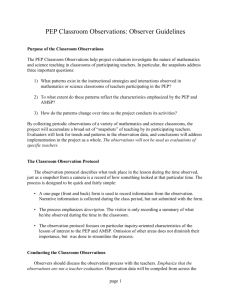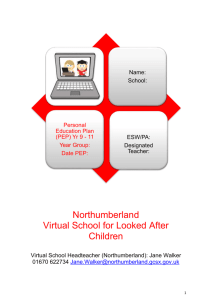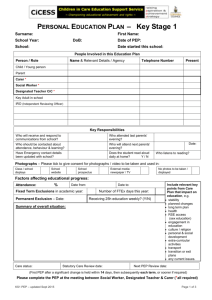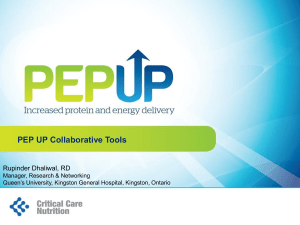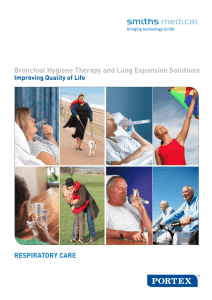Positive Expiratory Pressure Therapy
advertisement
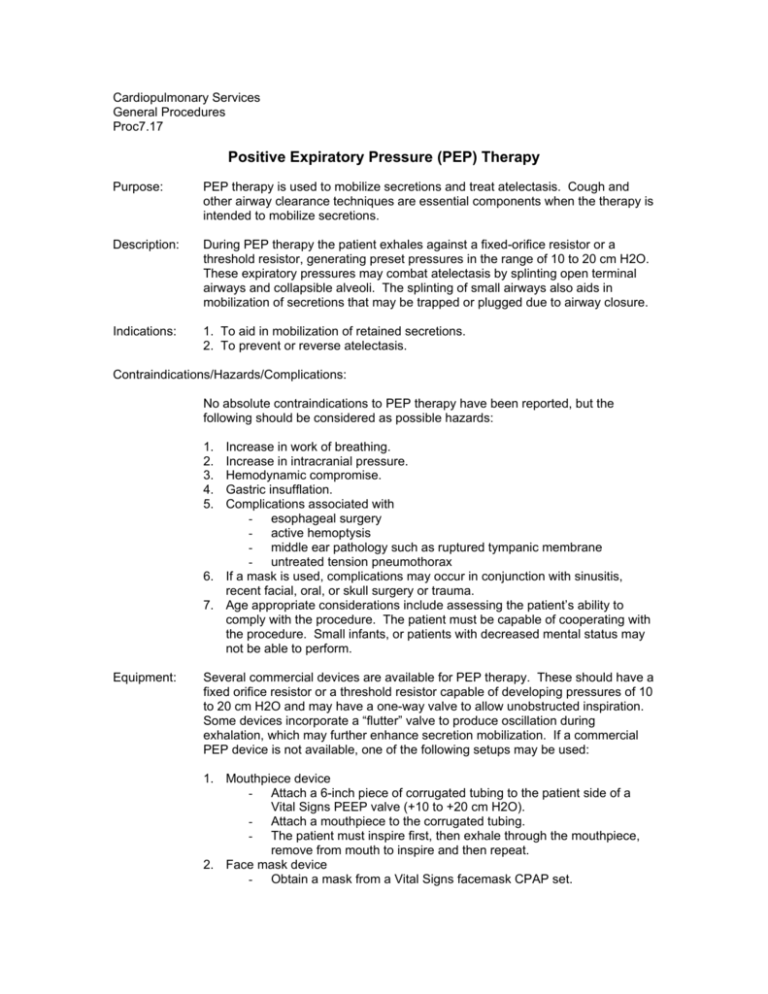
Cardiopulmonary Services General Procedures Proc7.17 Positive Expiratory Pressure (PEP) Therapy Purpose: PEP therapy is used to mobilize secretions and treat atelectasis. Cough and other airway clearance techniques are essential components when the therapy is intended to mobilize secretions. Description: During PEP therapy the patient exhales against a fixed-orifice resistor or a threshold resistor, generating preset pressures in the range of 10 to 20 cm H2O. These expiratory pressures may combat atelectasis by splinting open terminal airways and collapsible alveoli. The splinting of small airways also aids in mobilization of secretions that may be trapped or plugged due to airway closure. Indications: 1. To aid in mobilization of retained secretions. 2. To prevent or reverse atelectasis. Contraindications/Hazards/Complications: No absolute contraindications to PEP therapy have been reported, but the following should be considered as possible hazards: 1. 2. 3. 4. 5. Increase in work of breathing. Increase in intracranial pressure. Hemodynamic compromise. Gastric insufflation. Complications associated with - esophageal surgery - active hemoptysis - middle ear pathology such as ruptured tympanic membrane - untreated tension pneumothorax 6. If a mask is used, complications may occur in conjunction with sinusitis, recent facial, oral, or skull surgery or trauma. 7. Age appropriate considerations include assessing the patient’s ability to comply with the procedure. The patient must be capable of cooperating with the procedure. Small infants, or patients with decreased mental status may not be able to perform. Equipment: Several commercial devices are available for PEP therapy. These should have a fixed orifice resistor or a threshold resistor capable of developing pressures of 10 to 20 cm H2O and may have a one-way valve to allow unobstructed inspiration. Some devices incorporate a “flutter” valve to produce oscillation during exhalation, which may further enhance secretion mobilization. If a commercial PEP device is not available, one of the following setups may be used: 1. Mouthpiece device - Attach a 6-inch piece of corrugated tubing to the patient side of a Vital Signs PEEP valve (+10 to +20 cm H2O). - Attach a mouthpiece to the corrugated tubing. - The patient must inspire first, then exhale through the mouthpiece, remove from mouth to inspire and then repeat. 2. Face mask device - Obtain a mask from a Vital Signs facemask CPAP set. - Personnel: Attach a Vital Signs PEEP valve (+10 to +20 cm H2O) to the expiratory outlet of the mask. Have the patient inspire first, then hold the mask snuggly to the patient’s face during exhalation. Remove the mask for the next inspiration (even though there is an inspiratory port) and repeat. Respiratory Care Therapists I and II, Respiratory Care Technicians I and II Procedure: 1. 2. 3. 4. 5. 6. Upon verifying physician order for PEP therapy (frequency dependent on severity of symptoms), the RCP shall identify patient by comparing hospital and billing numbers on the armband to those on the physicians’ orders for therapy. Introduce himself/herself to the patient and explain the procedure, its’ indications, goals, and possible complications. Assemble the equipment as described above. Instruct the patient to exhale through the PEP device for 5 to 10 breaths. Remove the PEP device and have the patient perform 5 to 10 “huff coughs”. Monitor for secretion clearance. Assess breath sounds to indicate further retained secretions and repeat as necessary. NOTE: For patients with coinciding orders for medicated aerosol therapy, follow these guidelines. - If MDI therapy is ordered, deliver MDI followed by PEP. - If a commercially produced PEP device is used that allows connection of a HHN with unobstructed inspiration, perform the HHN and PEP together. - If using one of the setups described above with the Vital Signs PEEP valve, DO NOT place HHN in line with PEP. Deliver HHN first, followed by PEP. Infection Control: Utilize standard universal precautions. References: AARC Clinical Practice Guidelines Written: February 2000 Reviewed: August 2000 Revised: March 2003
